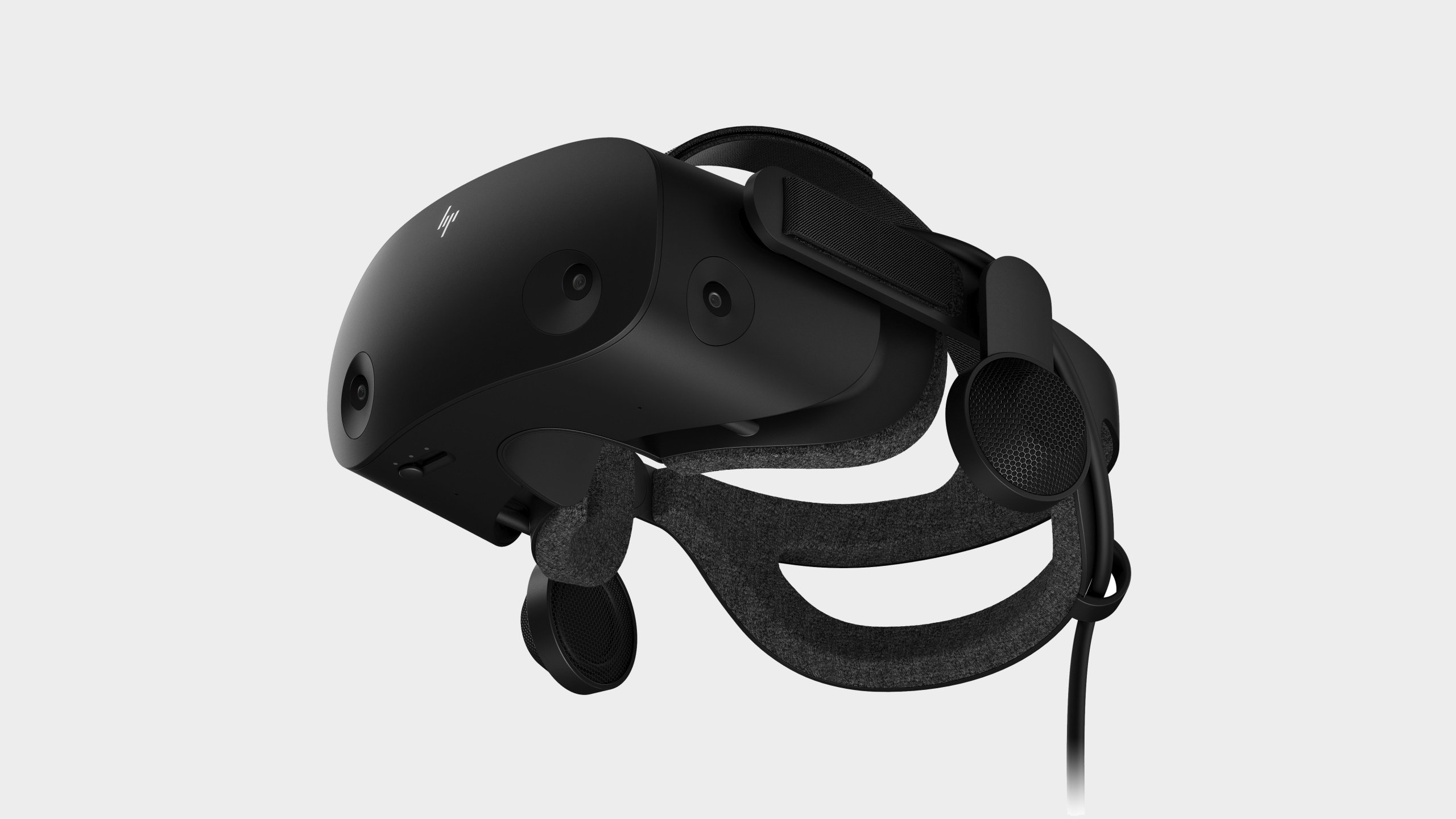Valve and Microsoft are helping HP jump back into VR with the Reverb G2
The best of all worlds? This could be the mixed VR headset we've all been waiting for.

HP has just unveiled a new VR headset, the HP Reverb G2. A headset that it claims is "the world’s highest resolution VR headset among major vendors", which feels like HP is just trying to upset fans of the Pimax 8K. The Reverb G2 also features new cutting-edge optics, inside-out tracking, spatial 3D audio, natural gestures, and plug and play support for Windows Mixed Reality and SteamVR.
You'd be forgiven for thinking that HP has taken a bit of a backseat in the recent VR revival, but it turns out it's been working in the background with Valve and Microsoft to improve on the original Reverb. This new headset retains the Reverb's 2160 x 2160 per eye resolution and the 114-degree field of view, but improves upon it, with better spatial audio, 4-camera inside-out tracking for better all-round monitoring of your hands, and improved comfort for longer sessions.
The HP Reverb G2 will be available in the Fall, with a retail price of $599. Pre-orders will be available from today in the US, via HP's website, and the SteamVR homepage.
That work with Valve is most evident on the optics and audio front. While the new lenses aren't the same as those found in the Valve Index, they are inspired by them and offer up improved brightness and contrast as well as reduced persistence and perceived mura (screen-door effect) for a more immersive experience. This is echoed on the audio front, with the Reverb G2 using the same drivers as found in the Index, and the speakers are held 10mm off the ears so that they don't get uncomfortable during long sessions.
Also on the comfort front HP has introduced a new IPD adjustment slider on the headset that will enable you to set the distance between your pupils properly so that you can wear the headset for longer periods of time. The Reverb G2 has also improved the face cushioning over the first headset for better weight distribution. The controller have also had a major shakeup, with a different button layout, and more nuanced control.
HP was keen to point out that the VR market is doing very well, by pointing out that this past April saw SteamVR hit nearly one million additional monthly connected headsets. I wonder why that was? Possibly something to do with Half-Life: Alyx? It'll be interesting to see if May continues this trend.
HP seems to think that VR is going to be used for more than games though, which is a brave angle. In fact it came up with three different usage cases that don't involve pretending you're in a dystopian city under alien rule. These usage cases are apparently to create, collaborate, and liste—learn. I'll admit I'll be quite happy if it's just an awesome VR gaming headset.
Keep up to date with the most important stories and the best deals, as picked by the PC Gamer team.
HP's first headset, the Reverb, was generally well received thanks to its high resolution display and tempting price tag, but HP was somewhat taken aback by demand and couldn't produce enough of them. Part of the reason for this is that it wasn't really designed with consumers in mind, something it believes it understands much better this time around.
Alan has been writing about PC tech since before 3D graphics cards existed, and still vividly recalls having to fight with MS-DOS just to get games to load. He fondly remembers the killer combo of a Matrox Millenium and 3dfx Voodoo, and seeing Lara Croft in 3D for the first time. He's very glad hardware has advanced as much as it has though, and is particularly happy when putting the latest M.2 NVMe SSDs, AMD processors, and laptops through their paces. He has a long-lasting Magic: The Gathering obsession but limits this to MTG Arena these days.



